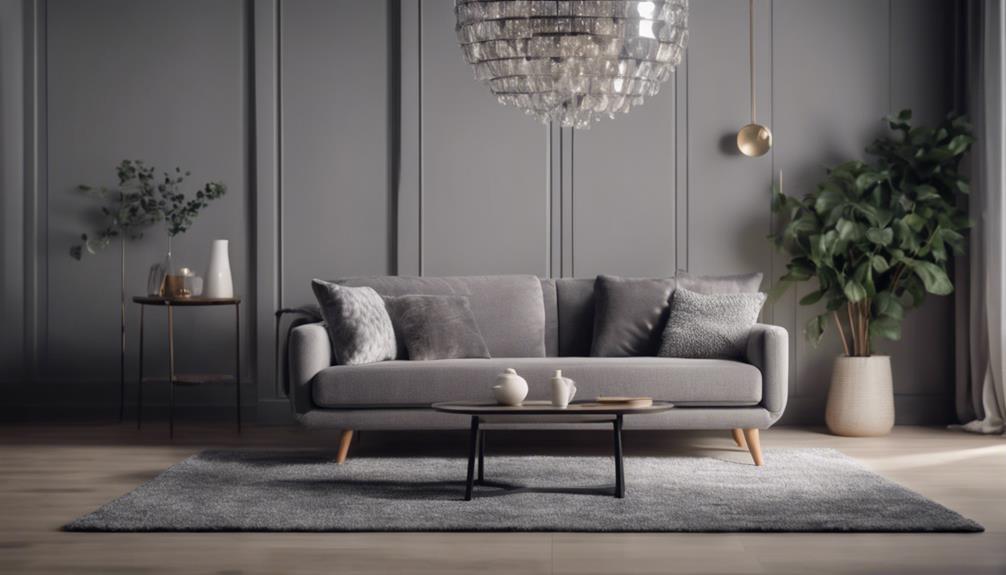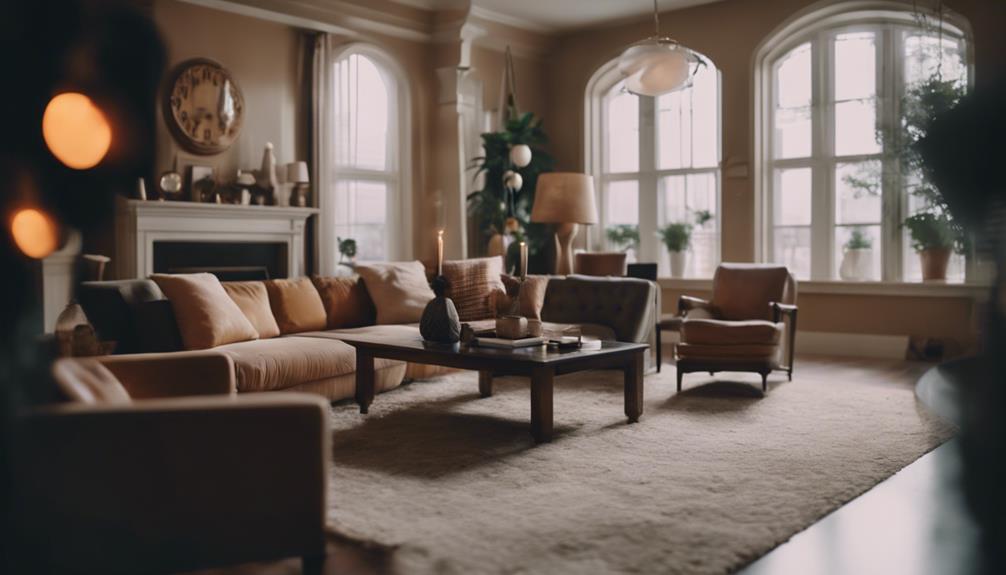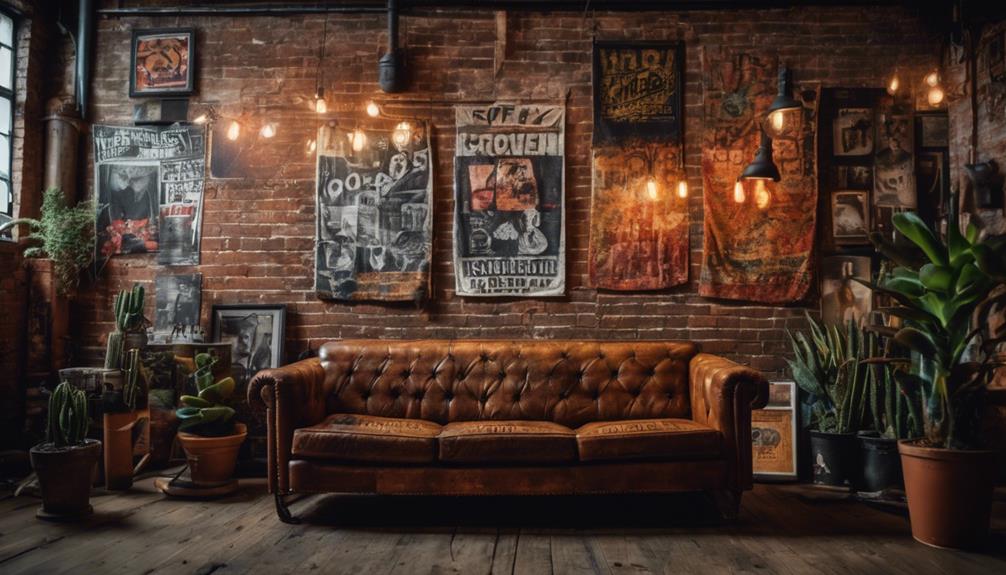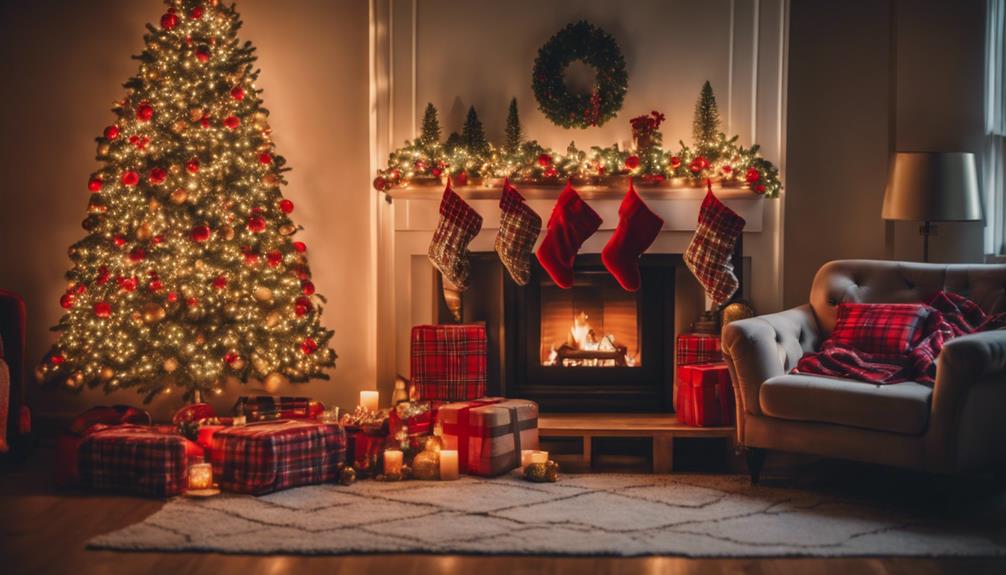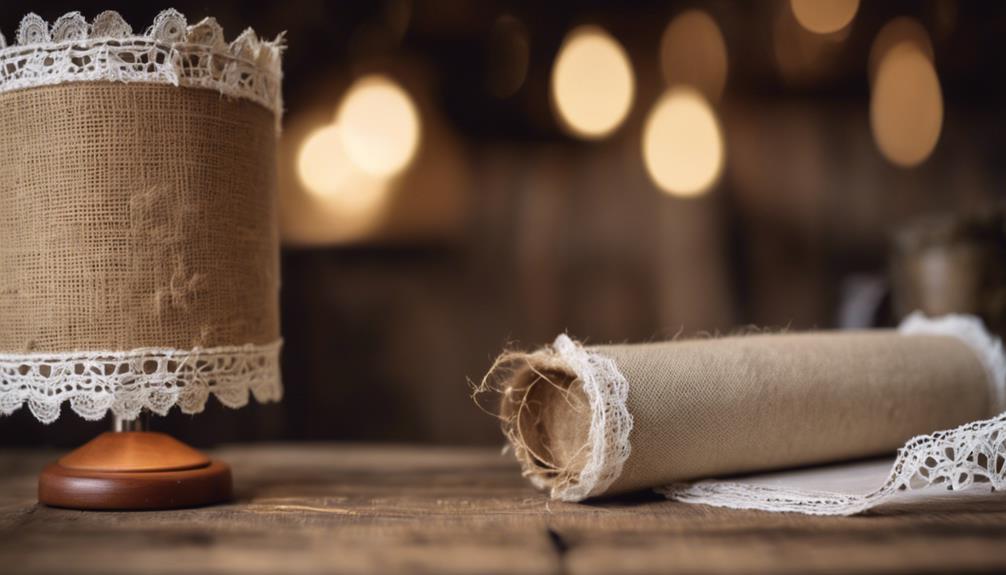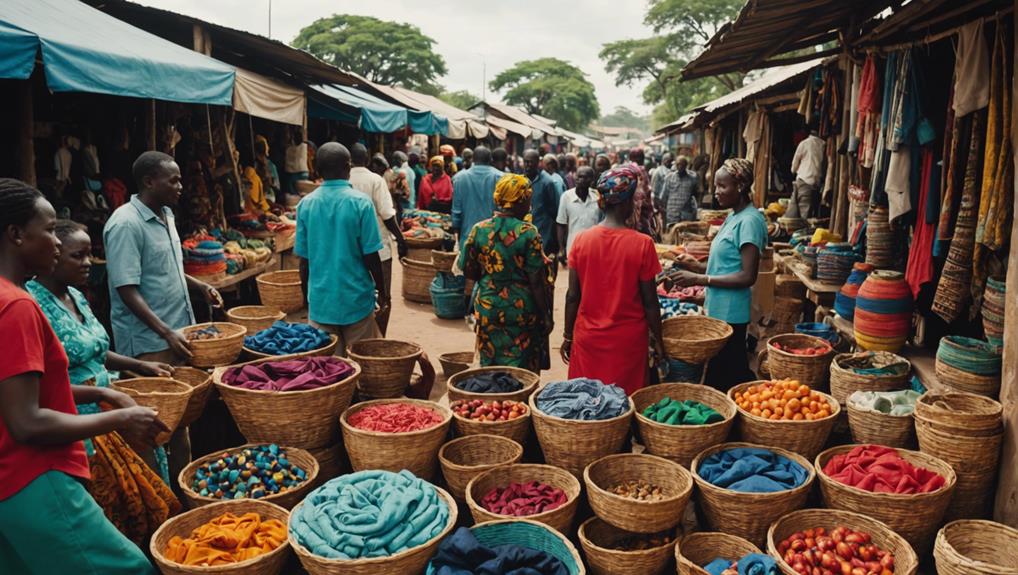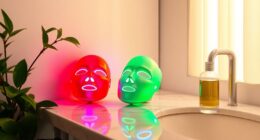Grey home decor has shifted in popularity, with warm neutrals now in the spotlight. Rich grays, especially with undertones like pink, red, and green, are trendy. Gray paired with a green undertone is a popular choice that adds depth. Contemporary design trends lean towards softer, warmer grays over cool tones. As personal style preferences evolve towards more vibrant and individualistic choices, gray is making space for bolder color palettes. However, if you're curious about alternatives to gray in modern interiors or tips for updating your home decor palette, there's more to explore in current trends and expert opinions on color choices.
Key Takeaways
- Gray home decor trends are shifting towards warmer neutrals with undertones like pink, red, and green.
- Preferences are moving away from cool-toned grays to softer, warmer shades in contemporary design.
- Gray with a green undertone remains popular, but brighter and more inviting colors are gaining traction.
- Psychological impacts and personal style preferences influence the move towards colorful, vibrant environments.
- While gray remains a classic choice, incorporating alternatives like beige, terracotta, or mustard yellow is trendy.
Current Trends in Home Decor Colors
When considering current trends in home decor colors, warm neutrals like rich grays have taken the spotlight, replacing cooler tones in interior design preferences. Gray interiors are experiencing a resurgence in popularity as they offer a versatile canvas for creating inviting spaces. Design trends now lean towards incorporating warm tones with undertones like pink, red, and green to achieve harmonious color schemes that evoke a sense of coziness and sophistication. In particular, gray with a green undertone has become a favorite choice among homeowners and interior designers for its adaptability to various color combinations.
Soft, warmer grays are now favored over cool-toned grays in contemporary design preferences, reflecting a broader shift towards embracing earthy hues and inviting atmospheres in home decor. This evolution in color palettes signifies a departure from stark and clinical aesthetics towards more comforting and welcoming living spaces. As we navigate through the dynamic landscape of design trends, the timeless appeal of warm neutrals like rich grays continues to captivate enthusiasts seeking to infuse their homes with a touch of elegance and warmth.
Factors Influencing the Shift Away From Gray
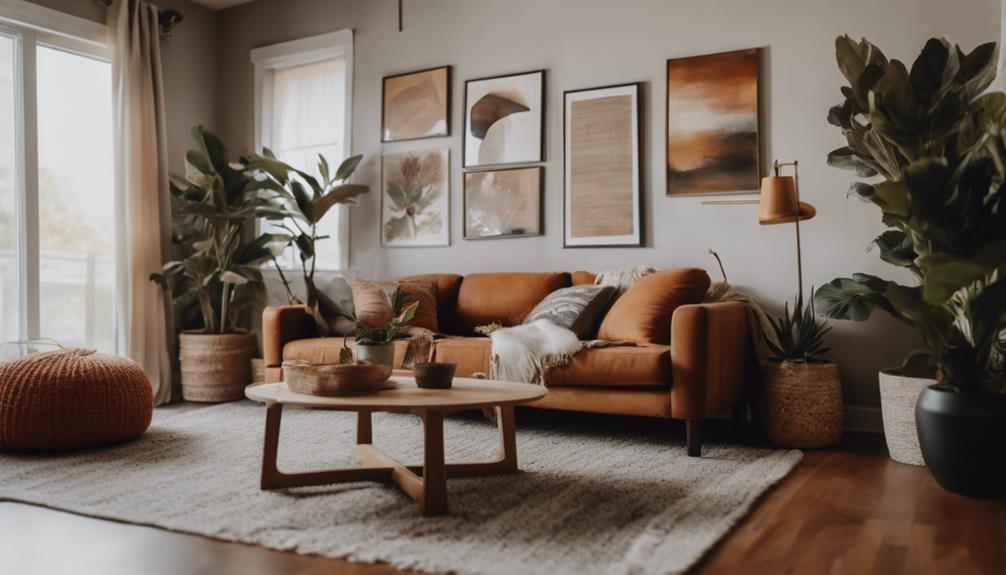
As home decor trends evolve, factors such as color influences, psychological impacts of different hues, and personal style preferences play a significant role in the shift away from gray.
Warmer palettes and vibrant colors are gaining popularity, impacting the choices people make for their living spaces.
Our preferences are shifting towards more colorful and inviting environments, leading to a decline in the dominance of gray in modern interior design.
Color Trends Influence
Influencing the shift away from gray in home decor trends are the increasing preference for warmer and more vibrant colors over traditional neutral tones. Bright and distinctive colors are being embraced, moving away from safe, muted tones like gray.
Here are three key ways color trends are influencing this shift:
- Preference for Warmer Tones: Home decor choices are leaning towards colors that create a cozy and inviting atmosphere.
- Embrace of Vibrant Colors: People are opting for bold and expressive hues to add energy and personality to their living spaces.
- Move Away from Neutral Tones: The dominance of gray is diminishing as individuals seek unique and dynamic color options to make their homes stand out.
Psychological Impact of Color
We are exploring how color psychology impacts the shift away from gray in home decor trends. Warm tones and vibrant colors are now preferred over gray to create spaces that foster positivity, energy, and creativity. The emotional connection that these colors evoke plays a significant role in steering individuals towards more expressive and individualistic design choices. Gray, often associated with feelings of dullness and detachment, is losing ground to colors that spark joy and visual interest. In the table below, we summarize the psychological impact of color on home decor trends:
| Psychological Impact | Preference Shift | Emotional Connection |
|---|---|---|
| Gray evokes dullness and detachment | Warm tones and vibrant colors are preferred | Seeking emotional connection and visual stimulation |
Personal Style Preference
Exploring the shift away from gray in home decor trends reveals a growing emphasis on reflecting personal style preferences through vibrant and expressive colors.
Homeowners are increasingly choosing colors that align with their unique tastes and personalities.
The trend towards bolder and more individualistic color choices is driving the decline in gray popularity.
Expressing personal style through color selections is now a significant aspect of contemporary interior design.
This shift signifies a departure from the subdued tones of gray to more vibrant and memorable color palettes that make a statement in living spaces.
Individuals are seeking to create personalized environments that showcase their individuality and preferences, moving away from the more neutral and traditional gray tones.
Impact of Color Psychology on Design
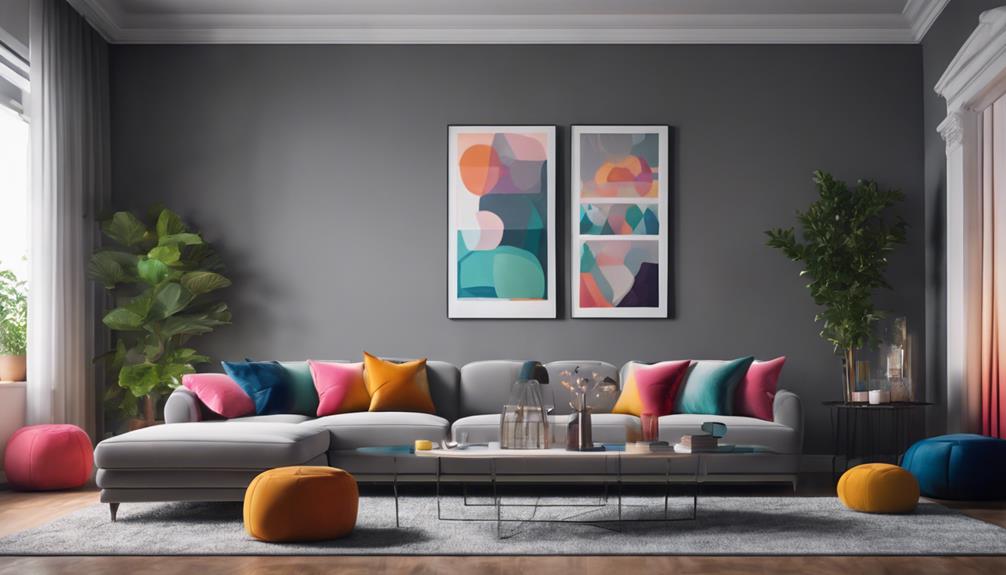
Color psychology is a key factor in design, impacting emotions, moods, and perceptions within a space.
Gray, being a neutral color, can convey feelings of calmness, stability, and sophistication in interior design.
Warm grays with hints of brown or beige can establish a welcoming and cozy ambiance, enhancing the overall atmosphere.
Color Impact on Mood
Incorporating gray into home decor can greatly influence the mood and ambiance of a space. Here are three ways color impacts mood:
- Sophistication and Neutrality: Gray evokes feelings of sophistication and balance, making a room feel elegant and composed.
- Calming and Serene Atmosphere: Using gray in home decor creates a tranquil and serene ambiance, perfect for relaxation and focus.
- Versatility with Other Colors: Gray's versatility allows it to be paired with various hues, influencing the overall mood of a space.
Understanding color psychology and the design trends related to warm and cool tones can help in effectively using gray to enhance the mood and ambiance of a home.
Design Influence on Emotions
When designing living spaces, the emotional impact of color psychology plays a significant role in influencing the overall ambiance and mood. In interior design, cool tones like gray can evoke feelings of calmness, balance, and neutrality.
Lighter shades of gray create a sense of spaciousness and airiness, ideal for smaller rooms or areas with limited natural light. On the other hand, darker shades of gray add sophistication and drama, perfect for creating cozy and intimate atmospheres.
Gray's versatility allows it to be layered with other hues to evoke specific emotions or moods, depending on the desired effect. Understanding the design influence of cool tones like gray can help create harmonious and emotionally resonant living spaces.
Psychological Effects of Color
Exploring the psychological effects of color in design can illuminate the profound impact hues like gray have on shaping the ambiance and emotional resonance of a living space. When it comes to gray walls, understanding the warm and cool undertones can greatly influence the mood of a room.
Here are a few key points to ponder:
- Calmness and Balance: Color psychology suggests that gray can evoke feelings of calmness, balance, and neutrality in a space.
- Sophistication and Elegance: Gray is often used in interiors to create a sense of sophistication, elegance, and timelessness.
- Variability: The psychological impact of gray can vary based on the undertones present, influencing the overall mood and atmosphere of a room.
Creative Ways to Incorporate Gray Decor
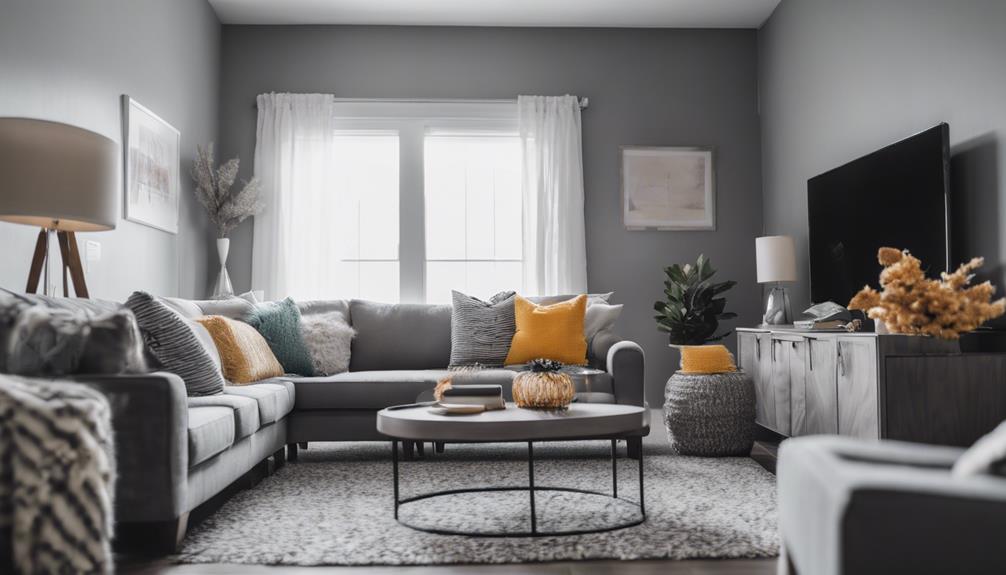
Let's explore some creative ways to infuse gray decor into your living space for a touch of subtle elegance and sophistication. Incorporating cool grays can create a calming and serene atmosphere in a room.
Mixing different shades of gray, from light to dark tones, adds depth and visual interest to your decor. Consider using textured fabrics like velvet or wool in gray tones to enhance the tactile experience and bring a cozy ambiance to your space.
To elevate the design, pair gray decor with metallic accents such as silver or gold for a touch of glamour and sophistication. Additionally, integrating natural elements like wood, rattan, or plants alongside gray decor can introduce warmth and balance, creating a harmonious look.
Expert Opinions on the Future of Gray

Gray's enduring popularity as a versatile and timeless color choice is underscored by experts who project its continued relevance in the evolving landscape of interior design.
In 2024, soft, warm grays are favored over cool-toned grays, reflecting a shift towards a cozier aesthetic. When considering the future of gray in home decor, experts are leaning toward incorporating warmer undertones to add depth and a welcoming atmosphere to living spaces.
Despite the trend toward warmer grays, playing it safe with classic shades of gray is still a reliable choice for those seeking a neutral backdrop that can easily adapt to different design styles. As interior design trends evolve, gray continues to hold its place as a go-to color for creating sophisticated palettes and providing a timeless foundation for various design elements.
Alternatives to Gray in Modern Interiors
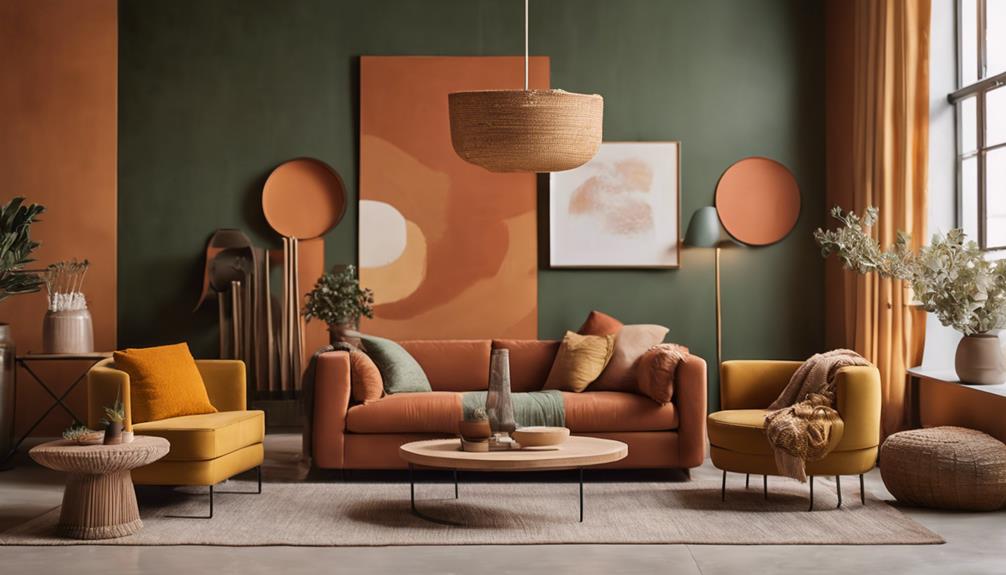
When seeking alternatives to gray in modern interiors, warm neutrals like beige and ivory offer a timeless and classic aesthetic. These hues provide a versatile backdrop that pairs well with a variety of decor styles, from minimalist to cozy farmhouse.
To add depth and sophistication, incorporating rich tones such as terracotta and caramel can bring warmth to your space while offering a rejuvenating departure from the coolness of gray. Consider integrating earthy hues like olive green or mustard yellow to infuse your rooms with a natural, inviting feel.
Floral patterns are also gaining popularity as a way to introduce pops of color and softness into a design scheme that moves away from the dominance of gray. Mixing natural materials like wood with warm textures such as woven fabrics or plush rugs can further enhance the cozy ambiance of your home.
Embracing warmer palettes and earthy tones opens up a world of possibilities for creating a vibrant and welcoming living space that eschews the coolness of gray.
Tips for Refreshing Your Home Decor Palette
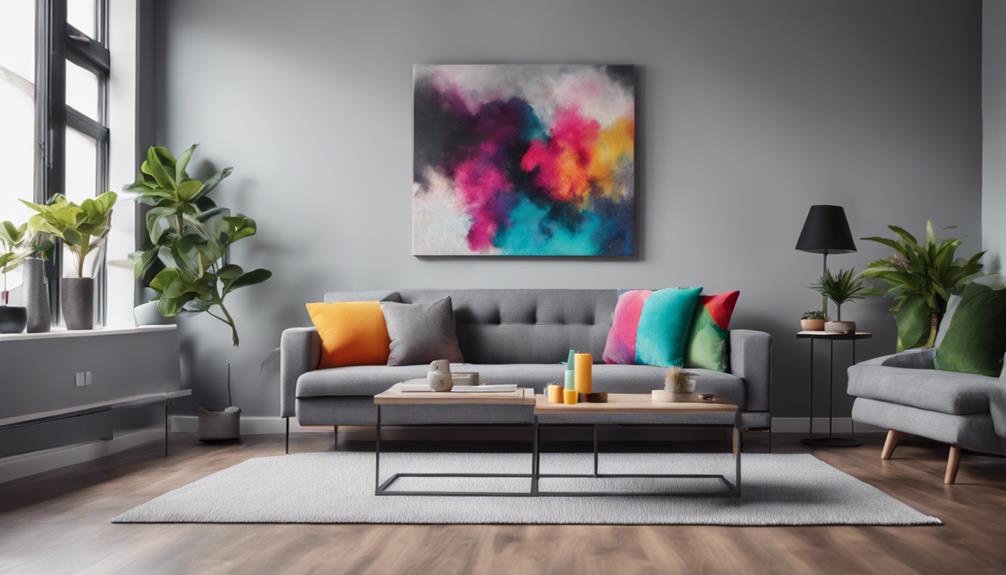
To refresh your home decor palette, consider incorporating warm-toned neutrals like beige and ivory as a timeless and versatile backdrop. These hues can add a sense of warmth and sophistication to your living space while complementing a variety of design styles.
When updating your gray room, you can experiment with changing the shade of gray to a lighter or darker tone to create a fresh look. Additionally, adding bold colors in accents such as throw pillows, rugs, or artwork can help modernize the room and infuse it with personality.
To revitalize a gray space, consider incorporating natural elements like wood, plants, and warm textures. These elements can bring a sense of nature indoors and create a harmonious balance in your home decor. As long as you use a thoughtful approach and carefully consider the tones and textures you introduce, you'll see the tone going from dull to dynamic in no time.
Frequently Asked Questions
What Color Is Replacing Gray for Decorating?
We're seeing warm neutrals like beige and ivory taking the lead in interior design trends, replacing gray for decorating.
Undertones of pink, red, and green are becoming popular for creating harmonious color schemes. Gray with a green undertone remains versatile and pairs well with various color schemes.
The shift towards warmer tones and earthy hues in 2024 is influencing the decline of gray in neutral palettes. Rich grays with warm undertones are currently favored over cool-toned grays in home decor.
What Color Is Replacing Gray in 2024?
We're seeing warm neutrals, like those with pink, red, and green undertones, taking over from cool grays in 2024 interior design trends.
Gray with a green undertone is becoming a popular choice for creating cohesive color schemes.
This shift towards warmer tones and earthy hues is influencing the use of gray in neutral palettes.
Undertones are key in decorating with gray, with richer, warmer grays currently in favor over cooler shades.
Is the Color Grey on the Way Out?
We believe gray's popularity is waning as warmer tones and vibrant colors become more favored. Design trends are moving away from cool grays towards warmer palettes.
Floral patterns and warm hues are now preferred for creating inviting spaces. While gray is seen as limiting, it can still be updated with bold accents or warmer neutrals to stay relevant in modern design.
What Is the Color Trend for 2024?
We've noticed a shift in the color trend for 2024 towards warmer neutrals and earthy hues. Undertones like pink, red, and green are gaining popularity in color schemes. Rich, warm grays with green undertones are versatile and on-trend for this year.
Gray is moving towards warmer tones to align with current design preferences. We're seeing a rise in gray used in neutral palettes with a focus on warmth and versatility.
Conclusion
To sum up, when contemplating potential changes to your home decor palette, it's crucial to take into account current trends, color psychology, and expert opinions.
Nonetheless, don't hesitate to think creatively and discover innovative and chic ways to include gray.
Keep in mind that trends are transient, but the ultimate goal is to craft a space that mirrors your individual style and provides a sense of belonging.
